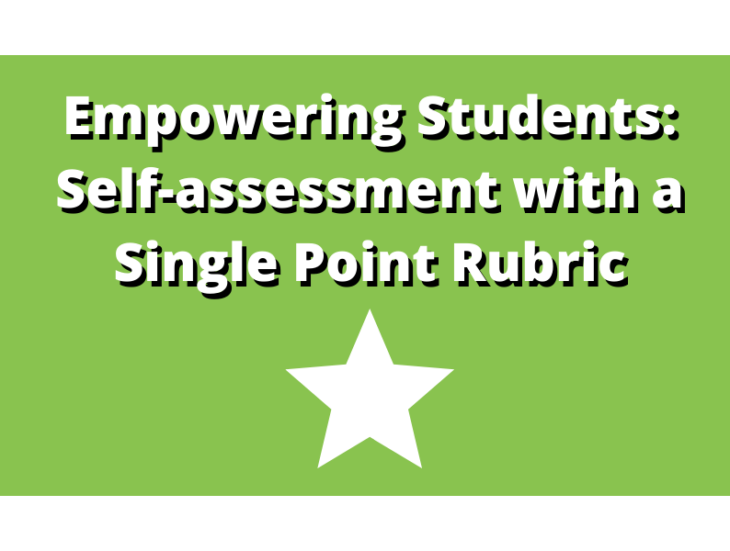
Why self-assessment?
Self-assessment provides students the opportunity to build awareness and reflect on what they understand and do not understand.
Self-assessment provides students the opportunity to empower themselves through:
- Promoting the skills of reflective practice and self-monitoring.
- Promoting academic integrity through student self-reporting of learning progress.
- Developing self-directed learning.
- Increasing student motivation.
- Helping students develop a range of personal, transferable skills.
- Learn more about self-assessment from Cornell Center for Teaching Innovation
What is a single point rubric?
The first step is making sure students are able to identify where they are in the learning through self-assessment. This means providing them with a tool like a single point rubric. We first learned about single point rubrics from the amazing Jennifer Gonzales at the Cult of Pedagogy blog. With a single point rubric, you, as the teacher, provide students with one column of a traditional rubric and the students reflect and decide on whether they match it, or are below or above that place. Learn more about single-point rubrics from Jennifer Gonzalez.
Why would we want to share a single point rubric with students?
By focusing on one criteria, it narrows and simplifies the learning path for students. This self-reflection through the single point rubric helps to determine if the student is on the path, off the path and needs reteaching, or ahead of the pack. Students will step up to the responsibility of identifying where they are at on this path and share their reflection and evidence back.
How will students use a single point rubric?
To introduce students to the use of a single-point rubric, consider the ‘I do, we do, you do’ structure. Providing students with a body of work (with low cognitive load) and working through the single-point rubric to assess gives students the opportunity to practice.
As students move to independently use a single-point rubric, giving them a space and giving them time to work on this within the classroom is essential. Whether you are asking them to physically look at work or giving them a digital space where they can compile their work, you need to make space for this reflection to happen with work that they have already completed. This process will not work overnight and will require modeling, patience, and perseverance.
- Digital Space through Google Slides coming during Part II of our series
What will teachers learn about the students when they go through this process?
- Identify where the gaps are in the instruction.
- Learn where instruction is the strongest.
- Begin to see how students can be learners in the learning community.
What will students learn about themselves when they go through this process?
- Learning is a process.
- Identify personal gaps in the own learning.
- Make personal connections across content lines.
Be part of the conversation! Share in the comments or reach out to us on Twitter--@DLGWAEA
~Beth, Amber, and Mindy
